In 2025, social platforms are ruthlessly selective about what gets seen.
Your content isn’t just competing with other creators; it’s up against machine learning models that decide in milliseconds whether you’re worth a spot in someone’s feed.
Today’s social media algorithms don’t just look at likes or shares—they factor in dwell time, user intent, post timing, content type, and even what you didn’t do (like replying to comments). It’s a full-blown digital meritocracy, and most posts never make the cut.
Short Summary
- Social media algorithms in 2025 prioritize meaningful engagement, user behavior, and platform-specific signals to determine content visibility.
- Each platform—Facebook, Instagram, TikTok, X, YouTube has its own algorithmic rules, favoring different formats, timing, and interaction styles.
- Beating the algorithm requires user-centric content, early engagement, consistency, and adapting to platform trends without compromising brand voice.
- Social SEO plays a growing role. Using searchable, natural language in captions and titles can boost discoverability across platforms.
- The future of social media algorithms lies in AI-driven personalization and ethical challenges, requiring creators to balance reach with responsibility.
You’d be surprised to know your content is shown to less than 5% of your followers unless it garners immediate engagement.
But that doesn’t mean you’re powerless. Once you figure out how the social media algorithm works, you can easily level up your engagement game.
Plus, if you pair this knowledge with a pro social media management tool, then honestly, there’s no stopping you!
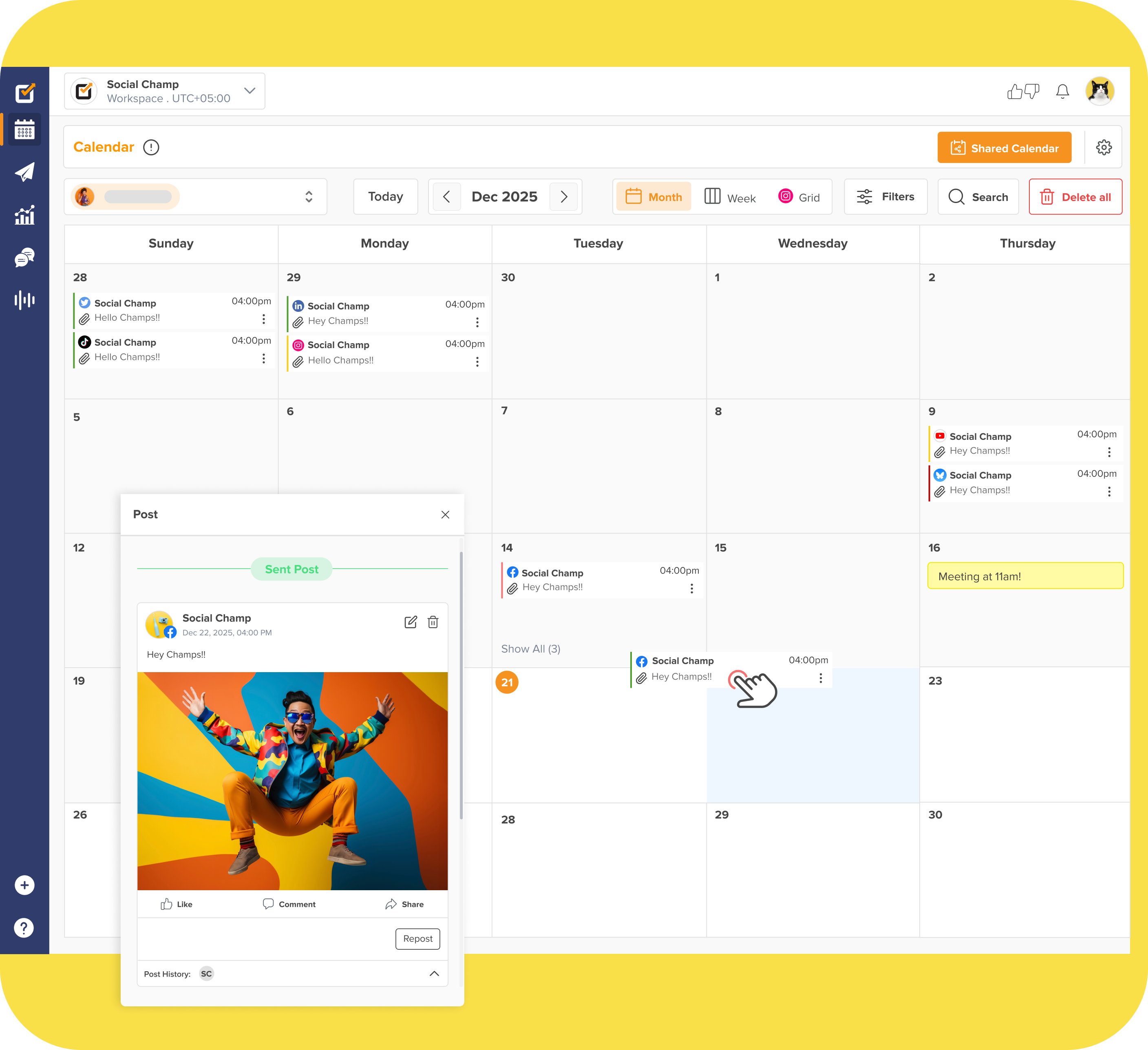
Struggling to Keep Up With the Algorithm?
Let Social Champ handle the timing, formatting, and consistency—so you can focus on creating content that wins.
What Is a Social Media Algorithm and How Has It Evolved?
To put it simply, a social media algorithm is a set of automated rules and calculations used by platforms to decide which content appears in a user’s feed, and what order.
Instead of displaying posts chronologically, platforms use these algorithms to surface what they believe is most relevant to each individual user.
-
What Is an Algorithm in Social Media?
The algorithm definition in social media refers to the underlying system that prioritizes content based on specific signals.
These signals can include how often a user interacts with a page, what kind of content they engage with, who they follow, and even what they scroll past without reacting.
Each platform, like Facebook, X, TikTok, Instagram, and Pinterest, has its social media algorithms that it uses to curate a user’s experience.
However, all of these algorithm systems boil down to AI to analyze, predict, and rank content on the platforms’ different feeds.
-
How Does a Social Media Algorithm Work?
Understanding what an algorithm is in social media is necessary for anyone looking to maximize their engagement on these platforms effectively.
In 2025, social media algorithms have become more sophisticated, focusing on:
- User Engagement: Prioritizing content that users interact with, such as likes, comments, shares, and watch time.
- Content Relevance: Displaying posts that align with your interests and past interactions.
- Authenticity and Quality: Favoring original, high-quality content over clickbait or misleading posts.
- AI-Powered Predictions: Utilizing machine learning to anticipate what content you’ll engage with next.
-
Evolution in 2024–2025
Recent updates have introduced significant changes:
- Enhanced Personalization: Algorithms now analyze a broader range of data, including browsing history, location, and even mood-based preferences, to deliver more tailored content.
- Stricter Content Policies: Platforms are cracking down on misinformation and low-quality content, downranking posts that spread false information or seem spammy. Fact-checking has become more important, with some platforms scoring content based on credibility.
- Rise of Niche Communities: Algorithms are increasingly catering to specialized interests, allowing niche content to thrive and reach highly engaged audiences.
- Search Integration: Discoverability is no longer limited to hashtags. On platforms like TikTok and YouTube, algorithms now integrate search behavior, making social content more SEO-driven.
Ultimately, understanding what algorithm is in social media means understanding how your content is filtered, ranked, and either amplified or ignored.
And this year, the key to visibility is less about volume and more about relevance, speed, and user intent.
Why Social Media Algorithms Matter for Visibility and Growth
If you’ve ever posted something on Instagram or TikTok and thought, “Why did no one see this?” you’ve already met the algorithm.
It’s the ultimate gatekeeping system deciding who sees your content, when they see it, and how often it shows up in their feed.
Why does that matter? Because on every major platform, your reach isn’t just about what you post, it’s about how well you align with the platform’s algorithm.
Let’s break down why these algorithms are such a big deal for your growth:
-
Algorithms Decide What People See
Your followers don’t automatically see everything you post. Algorithms filter content based on relevance, engagement, and user behavior.
If your content checks the right boxes, it gets pushed to more people, even beyond your current audience. If not, it quietly disappears.
-
Visibility Fuels Growth
The more people who see your content, the more chances you have to connect, engage, and grow.
Whether it’s gaining followers, generating leads, or building a brand, it all starts with being seen and algorithms are the gatekeepers of that visibility.
-
Engagement Sends the Right Signals
Algorithms track how people interact with your content, likes, comments, saves, shares, watch time, and use that data to decide if your post deserves a wider reach.
High engagement tells the algorithm, “People love this,” and that’s your ticket to even more exposure.
-
Knowing the Social Media Algorithm Helps You Win
Each platform’s algorithm has its own logic, but once you understand what it favors (like short-form video, original audio, or consistent posting), you can tailor your content to match.
That doesn’t mean gaming the system; it means working with it to grow faster and more sustainably.
Featured Article: The Ultimate SaaS Marketing Strategy for 2025: 15 Proven Tactics to Drive Growth
Social Media Algorithm Breakdown by Platforms
Each social media platform has its unique algorithm, and they don’t all play by the same rules. What works on TikTok might flop on LinkedIn.
That’s why it’s recommended to understand how each platform decides what content to promote.
In this section, we’ll break down how the algorithm works on the most popular platforms in 2025, so you can tailor your content strategy for maximum reach and engagement.
-
Facebook
Let’s start with the biggest social media platform with more than three billion monthly active users.
Powered by advanced AI and machine learning models, the Facebook algorithm now predicts what users want to see with more precision than ever before.
Marketers and content creators need to think beyond gaming the system.

Facebook’s Login Page The focus now is on creating authentic, engaging, and platform-native content that naturally fits into a user’s personalized feed.
What Powers the Algorithm in 2025?
Facebook’s 2025 algorithm is powered by four real-time ranking signals that determine which content makes it to a user’s feed and in what order.
These signals ensure the content shown is not just recent or popular, but relevant and engaging on an individual level.
These signals are:
- Inventory: All available posts a user could see, including from friends, Pages, groups, and AI-recommended content.
- Signals: Data about the post, like format, engagement type, recency, poster identity, and user interaction history.
- Predictions: Facebook’s AI predicts how likely a user is to engage (like, comment, share, watch, or click).
- Score: A final value assigned to each post based on its expected relevance and engagement potential.
What the Algorithm Prioritizes Now
Facebook has made a significant shift from passive engagement to meaningful interaction. The content that performs well aligns with these priorities:
- Authenticity Over Virality
- Diverse Content Formats
- Community-Driven Engagement
- Post Value & Timing
Engagement Signals That Matter
Not all interactions are equal in the eyes of the algorithm. Here’s what’s most influential:
- Comments and Replies – Two-way conversations matter more than one-off comments. Posts that generate replies and back-and-forth dialogue are heavily favored.
- Reactions with Intent – ‘Love’, ‘Wow’, and ‘Care’ reactions have more weight than a passive ‘Like’.
- Shares and Saves – Quiet signals like “save post” indicate depth of value, while shares suggest high social credibility.
- Video Watch Time – For video content, completion rate and repeat views matter far more than simple views.
-
Instagram
The Instagram algorithm is a dynamic system of ranking mechanisms that determine what content users see across Feed, Stories, Explore, and Reels.

Instagram’s Login Page It prioritizes relevance, recency, and engagement likelihood by analyzing thousands of signals to predict user behavior.
How the Algorithm Works in Feed & Stories
Feed and Stories prioritize content from people you follow and engage with regularly. The algorithm ranks posts based on the likelihood that you’ll interact with them.
Key Ranking Signals:
- Your activity: Posts you’ve liked, shared, commented on, or paused while scrolling.
- Post information: Time of posting, format (image or video), location tag, and popularity metrics (likes, comments).
- Interaction history: Frequency of engagement with specific accounts.
- Relationship indicators: DMs, comments, profile visits, and story replies all signal closeness.
Instagram also uses machine learning to predict five key interactions in the Feed.
- Time spent on a post
- Likes
- Comments
- Shares
- Profile tap
Posts predicted to drive these behaviors are ranked higher.
How the Instagram Algorithm Works in Explore
Explore the surface content from accounts that users don’t follow.
It’s designed for discovery, using a recommendation-based algorithm rooted in community behavior and engagement patterns.
Key Ranking Signals:
- Engagement velocity: How quickly a post is liked, shared, or saved after being published.
- Your past behavior in Explore: Posts you’ve engaged with, topics you consistently show interest in.
- Similar audience behavior: What other users with similar interests are liking and saving?
- Creator authority: Frequency and depth of engagement with the creator’s content.
Content in Explore is filtered through Instagram’s Recommendations Guidelines, which exclude posts that are low quality, sensitive, or borderline content.
How the Instagram Algorithm Works in Reels
Reels is optimized for entertainment, surfacing short videos primarily from accounts you don’t follow. The algorithm is more aggressive in testing reach and exposure here.
Key Ranking Signals:
- Watch-through rate: Whether users watch the reel till the end.
- User feedback: Instagram surveys users to gauge entertainment value.
- Audio & visual quality: Reels using trending audio, high resolution, or effective editing are preferred.
- Engagement signals: Likes, shares, saves, and follows resulting from the Reel.
Instagram also deprioritizes:
- Low-resolution or recycled content
- Reels with visible watermarks
- Content overly focused on politics or static text
Instagram continuously updates its algorithms to reflect shifts in user behavior and content trends.
While the mechanisms differ slightly across each surface, the core principle remains consistent: prioritize relevance and reward authentic engagement.
-
LinkedIn
LinkedIn’s algorithm has evolved significantly over the years, and in 2025, it’s sharper and more behavior-driven than ever.
It is designed to prioritize content that is relevant, engaging, and professional.

LinkedIn’s Login Page The platform employs a multi-step process to determine which posts appear in a user’s feed, emphasizing quality interactions and meaningful content.
How LinkedIn’s Algorithm Works
- Quality Filtering: Upon posting, LinkedIn’s algorithm first assesses the content for quality. Posts are classified into three categories:
- Spam: Content that violates LinkedIn’s policies or is deemed irrelevant.
- Low-Quality: Posts that may lack depth or professionalism.
- High-Quality: Content that is informative, relevant, and adheres to community guidelines.
Only high-quality posts proceed to the next stage.
- Engagement Testing
After passing the quality filter, the post is shown to a small segment of the user’s network. The algorithm monitors initial interactions, such as likes, comments, and shares.
If the post garners strong engagement within the first hour, it is then shown to a broader audience, including second and third-degree connections.
- Network and Relevance Ranking
LinkedIn prioritizes content based on the strength of the user’s network and the relevance of the post:
- Connection Strength: Posts from first-degree connections are given higher priority.
- Relevance: Content that aligns with the user’s professional interests, industry, and past interactions is ranked higher.
This ensures that users see content that is both familiar and pertinent to their professional life.
- Dwell Time and Content Consumption
The algorithm also considers how long users spend viewing a post before engaging with it. Longer dwell times indicate higher interest and relevance.
Additionally, interactions such as saving a post, clicking “See More” on long-form content, or replaying a video contribute positively to the post’s ranking.
- Content Type and Format
LinkedIn evaluates the type and format of content:
- Text Posts: Short, impactful messages that encourage quick engagement.
- Articles: Long-form content that provides in-depth insights.
- Images and Videos: Visual content that captures attention and encourages interaction.
While the algorithm does not favor a specific format, diverse content types can appeal to different segments of the audience.
-
X/Twitter
The Twitter (X) algorithm is a recommendation engine that sorts through the massive volume of content on the platform to deliver tweets that are most relevant to each user.

X’s Homepage Its goal is to ensure the content aligns with users’ interests and engagement patterns.
Here’s an in-depth look at how it works.
How Does the Twitter (X) Algorithm Work?
The Twitter algorithm evaluates multiple signals to decide which tweets appear on your feed, across the different timelines, and in the Explore section. The algorithm works by scoring tweets based on user interactions, content relevance, and engagement likelihood.
Sourcing Potential Posts
The algorithm begins by sourcing potential tweets to display to users, drawing content from two main sources:
- In-Network: Tweets from accounts the user follows.
- Out-of-Network: Tweets from accounts the user does not follow but might find interesting.
Ranking Posts by Relevance
After sourcing tweets, the algorithm ranks them based on relevance, using machine learning to predict which tweets users are most likely to engage with. This ranking system takes into account:
- Past Interactions
- Trending Content.
- User Interests
Key Ranking Signals of the Twitter (X) Algorithm
The algorithm uses several key signals to determine which tweets should be prioritized and how they should be ranked.
Understanding these ranking signals is crucial for users, especially brands and marketers, to effectively leverage the platform. Here are the most important signals that influence the Twitter algorithm:
Engagement Signals
- Likes
- Retweets
- Replies and Conversations
- Impressions
- Content Type
- Time Sensitivity
Understanding the Different Twitter (X) Feeds
In 2025, Twitter (X) offers three distinct timelines: For You, Following, and Explore. Each one operates under its own set of algorithmic rules designed to enhance the user experience.
- The ‘For You’ Timeline
This feed combines tweets from accounts you follow with recommendations from accounts you don’t follow.
The algorithm curates this timeline based on your past interactions, interests, and what’s trending. Content from out-of-network accounts is sourced based on user engagement and content similarity.
- The ‘Following’ Timeline
The Following feed displays tweets in reverse chronological order from the accounts you follow.
While it’s less influenced by the algorithm, tweets with high engagement may still appear more prominently in your feed, even if they’re not the most recent.
- The Explore Tab
The Explore tab highlights trending tweets, events, and topics from both in-network and out-of-network accounts.
This feed is more focused on broadening a user’s exposure to viral content, breaking news, and live events, and is organized into categories like News, Sports, and Entertainment.
-
TikTok
TikTok’s rise as a discovery-first platform is largely due to its highly personalized and constantly adapting algorithm.
This platform also heavily focuses on content performance and viewer behavior to curate its For You Page (FYP).

TikTok’s Login Page In 2025, the algorithm has become even more refined, using deeper signals, advanced AI, and contextual relevance to serve the right videos to the right people at the right time.
Here’s how TikTok’s algorithm works and what influences content visibility:
How the TikTok Algorithm Operates
TikTok’s algorithm evaluates various signals to determine which videos to showcase to users. These signals can be categorized into three main areas:
- User Interactions
The algorithm closely monitors how users engage with content on the platform. Key interactions include:
- Likes and Shares
- Comments
- Video Completion
- Rewatches
- Follows
These interactions help the algorithm understand user preferences and tailor content accordingly.
- Video Information
Details about the videos themselves play a crucial role in content recommendation:
- Captions and Hashtags: Provide context and help categorize content.
- Sounds and Music: Popular or trending audio can boost a video’s visibility.
- Video Descriptions: Offer additional context for the algorithm to assess relevance.
By analyzing these elements, TikTok can effectively match videos with users likely to appreciate them.
- Device and Account Settings
While less influential than user interactions and video information, certain settings can affect content recommendations:
- Language Preference: Ensures content is understandable to the user.
- Country Setting: Helps deliver region-specific content.
- Device Type: May influence the type of content served based on device capabilities.
These settings assist in refining the personalization of the content feed.
Content Evaluation and Distribution
When a video is uploaded, TikTok initially presents it to a small audience to gauge its performance.
Based on the engagement metrics from this group, the algorithm decides whether to promote the video to a broader audience.
This iterative process ensures that only content resonating with viewers gains widespread visibility.
Factors That May Limit Content Reach
Certain types of content are less likely to be promoted by the algorithm:
- Previously Viewed Content: Redundant videos may be deprioritized.
- Spam or Misleading Content: Violates community guidelines and can be suppressed.
- Content Marked as “Not Interested”: User feedback directly influences content visibility.
- Potentially Harmful or Sensitive Content: Subject to stricter moderation and limited distribution.
Understanding these limitations is crucial for creators aiming to maximize their content’s reach.
-
YouTube
YouTube’s algorithm in 2025 has evolved to prioritize user satisfaction and personalized content discovery.

YouTube’s Homepage While traditional metrics like watch time remain important, the platform now emphasizes how well content meets viewers’ expectations and keeps them engaged.
Let’s take a look!
How the YouTube Algorithm Works
YouTube ranks content based on what each viewer is most likely to enjoy or find informative at a given time. It focuses on personalized recommendations, engagement metrics, and most importantly, user satisfaction.
- Personalized Recommendations
YouTube’s recommendation system delivers personalized video suggestions based on each user’s viewing habits, engagement patterns, and content preferences.
Every time a user logs in, YouTube ranks and adapts recommendations based on real-time behavior rather than just surfacing popular content.
When deciding what to recommend to each user, the YouTube algorithm takes into account the following:
- Watch History
- Viewing Habits
- Device & Time of Day
The algorithm doesn’t evaluate the content itself; it measures how viewers interact with it. As YouTube states, “Our algorithm doesn’t pay attention to videos; it pays attention to viewers.”
- Engagement Metrics
On YouTube, watch time, video views, likes, dislikes, and shares can all have a powerful impact on what kind of content they’ll see more of.
YouTube also considers direct feedback from users. Clicking on options like “Save to Watch Later,” “Share,” or “Not interested” effectively tells the algorithm what users like or dislike, influencing future recommendations.
- Viewer Satisfaction
The platform collects millions of responses to understand if viewers liked what they watched.
Post-watch behavior, such as whether the viewer continues watching more content or leaves YouTube entirely, also plays a crucial role.
Videos that people rewatch or revisit later signal high satisfaction.
Core Ranking Signals
YouTube’s recommendation system relies heavily on these ranking factors:
- Watch Time: The Total time viewers spend watching a video. Longer watch durations = higher relevance.
- Click-Through Rate (CTR): Measures how often people click after seeing your video in their feed — though less relevant for Shorts.
- Viewer Satisfaction: Based on likes, dislikes, “Not Interested” feedback, and millions of in-product survey responses.
- Audience Retention: If users drop off early, that signals poor relevance, regardless of CTR.
- Session Time: How much total time a viewer spends on YouTube after watching your video — a strong trust signal.
- Search and Discovery: Titles, descriptions, tags, and other metadata help videos surface in Search and Suggested Videos.
YouTube Shorts Algorithm
For the YouTube Shorts algorithm, different rules apply.
- Looping & Replays: Shorts that naturally loop or are rewatched rank higher.
- Engagement: Likes, shares, and comments carry strong weight.
- Watch Duration: High completion rates boost recommendations.
- No CTR Factor: Since users swipe through Shorts, click-through rate is not a ranking metric.
- Feed Variety: YouTube avoids showing too many Shorts from one creator in a row.
Featured Article:Facebook Ad Strategy: 15 Proven Tactics to Maximize Conversions in 2025
How to Beat the Social Media Algorithm: Proven Tactics for 2025
The simplest hack to beat the social media algorithm is making your content user-centric, focusing on engagement, and sticking to the community guidelines of each platform.
Let’s zoom in on this hack a little more and discover how exactly to achieve it!
-
Create for Humans First, Algorithm Second
If your content feels robotic or overly promotional, it gets ignored by users and algorithms.
Use relatable language, real stories, and content that speaks directly to your audience’s interests or struggles. Don’t be promotional, be personal.

Snapshot of Engaging Tweet -
Prioritize High-Performing Formats
Each platform favors certain content types. Lean into them.
- TikTok & Instagram: Short-form videos (under 60 seconds), especially with trending audio.
- YouTube: Long-form videos (8–15 minutes), but YouTube Shorts are key for discovery.
- LinkedIn: Text-based posts with strong hooks and native carousels.
- Facebook: Reels, Live videos, and community-driven posts still perform well.
- X (Twitter): Short threads, images/videos, and quote tweets see more engagement.

Screenshot of YouTube Video -
Encourage Meaningful Interactions, Not Just Reactions
Likes are easy. Comments, shares, and saves require effort, and that effort tells the algorithm your content matters.
Instead of using engagement bait, ask questions, invite opinions, or prompt storytelling in your captions. The deeper the comment thread, the higher your ranking potential.

Snapshot of Instagram Post -
Don’t Post Just to Stay Active, Post With Purpose
Flooding your feed doesn’t help if the content isn’t driving retention or interaction. Quality > quantity in 2025.
Before publishing, ask: Would someone share this? Save this? Respond to this? If the answer is no, revise or skip.
-
Ride the Right Trends (But Stay Relevant)
Trends aren’t just for Gen Z. They’re discovery fuel. Use trending sounds, hashtags, and formats, but make sure they align with your brand or message.
On TikTok and Instagram, using trending audio can significantly increase reach. Don’t just copy, add your own twist to stand out.

TikTok Post by Duolingo -
Don’t Skip Social SEO
Search is now a big part of how people find content on platforms like Instagram, TikTok, and YouTube.
Use keywords naturally in your captions, video titles, and on-screen text. Think about what your audience would type into the search bar.
Add descriptive alt text (where available), detailed video descriptions, and metadata with the right keywords to appear in social SEO.
Bonus Tip:
Being consistent on every platform also gets you noticed by the social media algorithm. Using Social Champ’s social media scheduler can help you stay consistent and cross-post on all your social media channels.

One Dashboard to Rule Them All.
Manage all your social channels, track performance, and stay algorithm-friendly—all from a single platform.
-
Automate Smarter With Social Champ: Stay Consistent and Algorithm-Friendly
Staying consistent is one of the golden rules for beating social media algorithms but doing it manually across multiple platforms? That’s exhausting.
Social Champ makes it effortless.
With its all-in-one dashboard, you can schedule posts, track performance, and optimize content for every major platform without juggling a dozen tools.
Whether you’re planning a week’s worth of TikTok videos for analyzing what’s working best on LinkedIn, Social Champ helps you stay active, relevant, and in sync with what the algorithm favors.
Its smart scheduling ensures your content goes out at the right time, while analytics give you the insights you need to improve what you post next.

Your Content Deserves More Than Random Reach.
Schedule with intent, optimize with insights, and grow with confidence—only with Social Champ.
The Future of Social Media Algorithms: AI, Personalization & Ethical Challenges
Looking ahead, social media algorithms are becoming more intelligent, more personalized—and more controversial.
AI now drives real-time content curation, learning from micro-behaviors like dwell time, swipe patterns, and even sentiment in comments.
This means content delivery is no longer just personalized—it’s predictive.
But hyper-personalization comes with a price. As algorithms get better at shaping our feeds, they also risk reinforcing echo chambers, amplifying bias, and prioritizing virality over credibility.
Platforms are increasingly under pressure to design transparent, ethical systems that balance engagement with responsibility.
For marketers and creators, the future means mastering not just the mechanics of the algorithm, but also its intent.
Success won’t just come from chasing reach—it’ll come from creating content that’s relevant, respectful, and responsibly optimized.
The future is algorithm-driven, but it’s also human-influenced. The more transparent and ethical these systems become, the better the experience will be for everyone.
Conclusion
In 2025, cracking the code of the social media algorithm isn’t about shortcuts, it’s about strategy.
Every platform has its own logic, but the core remains the same: create valuable, engaging content that speaks to your audience and aligns with platform signals.
From understanding how algorithms prioritize content to using trends, formats, and timing to your advantage, staying informed is the key to staying visible.
Tools like Social Champ help you stay consistent without losing momentum, so you can focus on content that actually connects.
Remember, algorithms are always evolving, but so can your approach. When you combine smart planning with authentic storytelling, you don’t just keep up with the algorithm, you make it work for you.
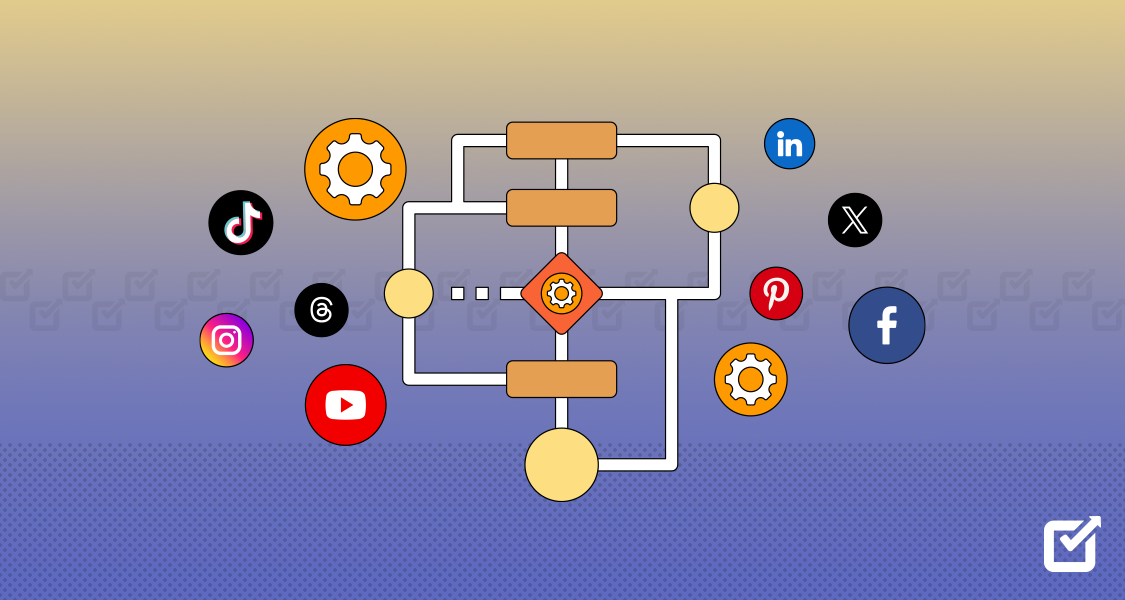
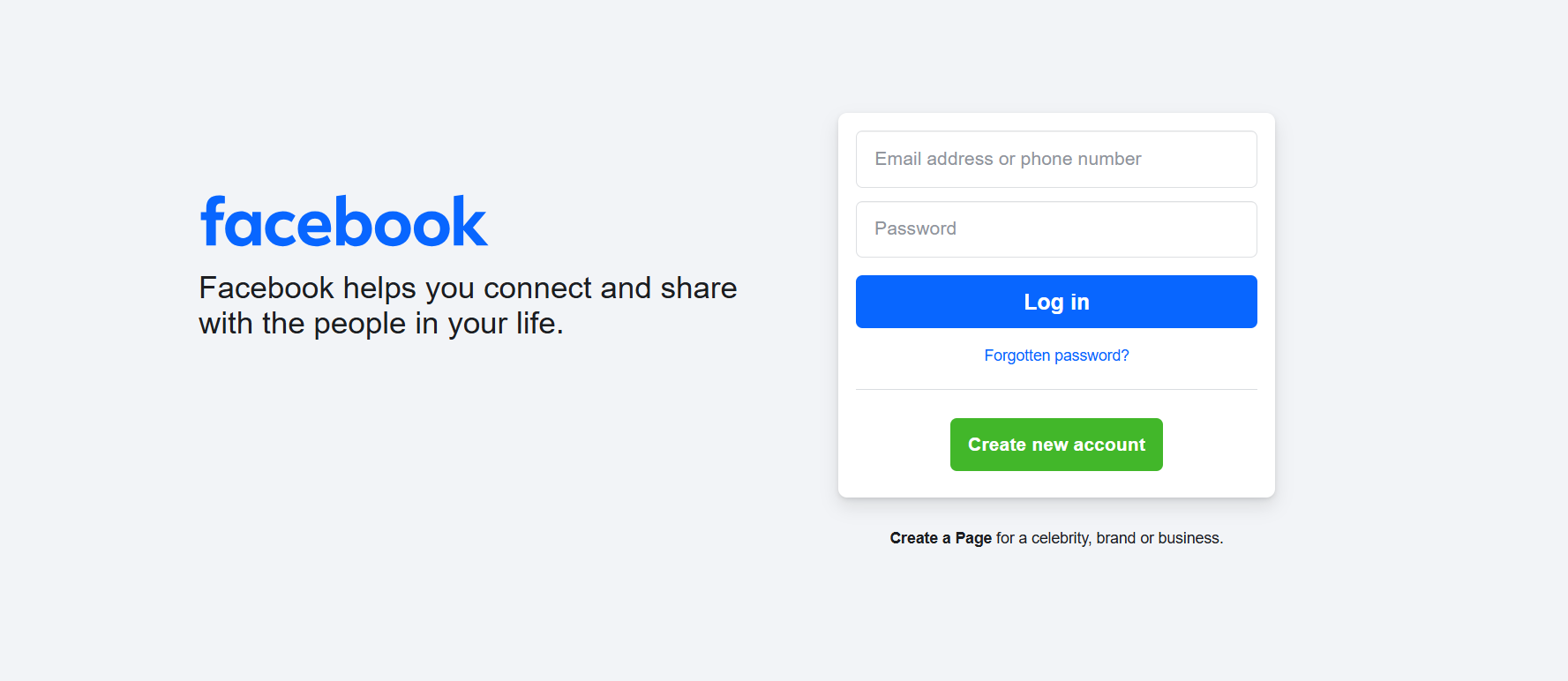
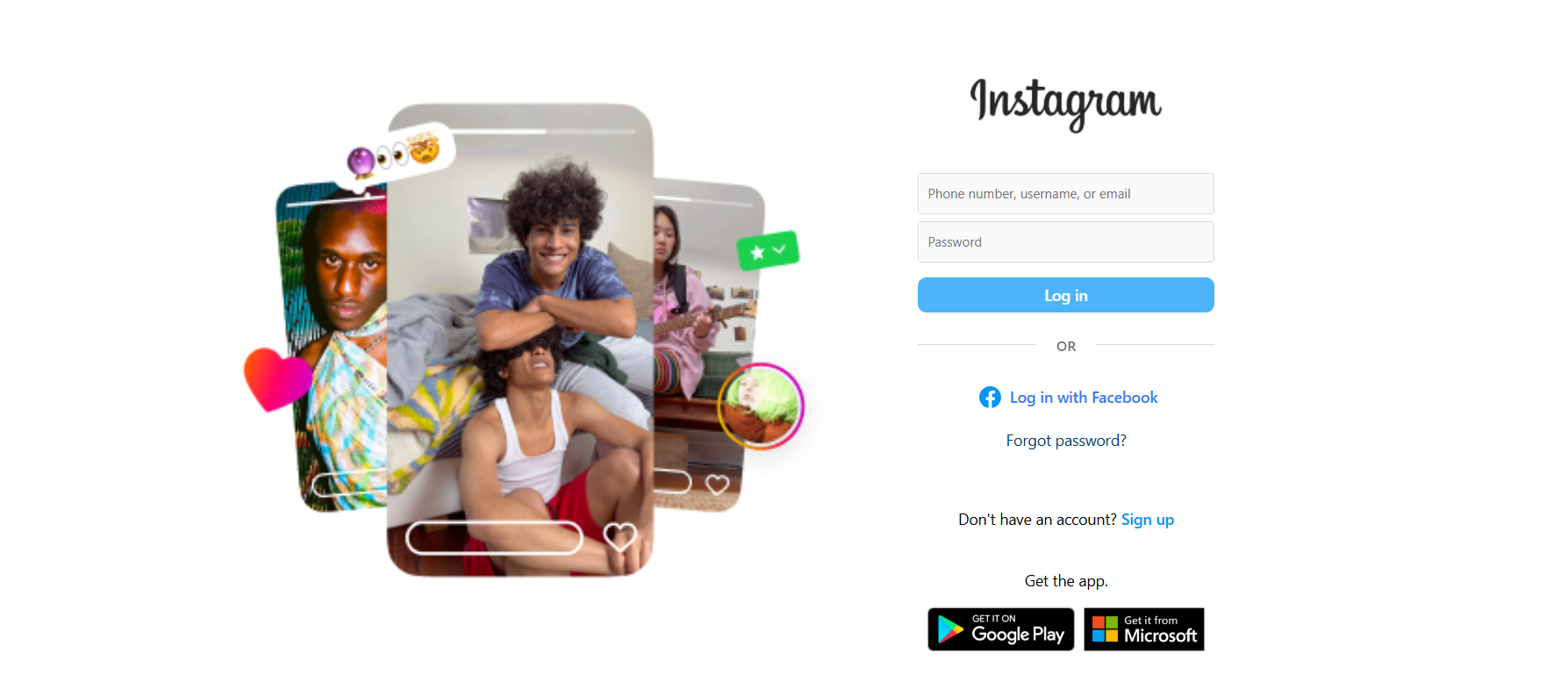

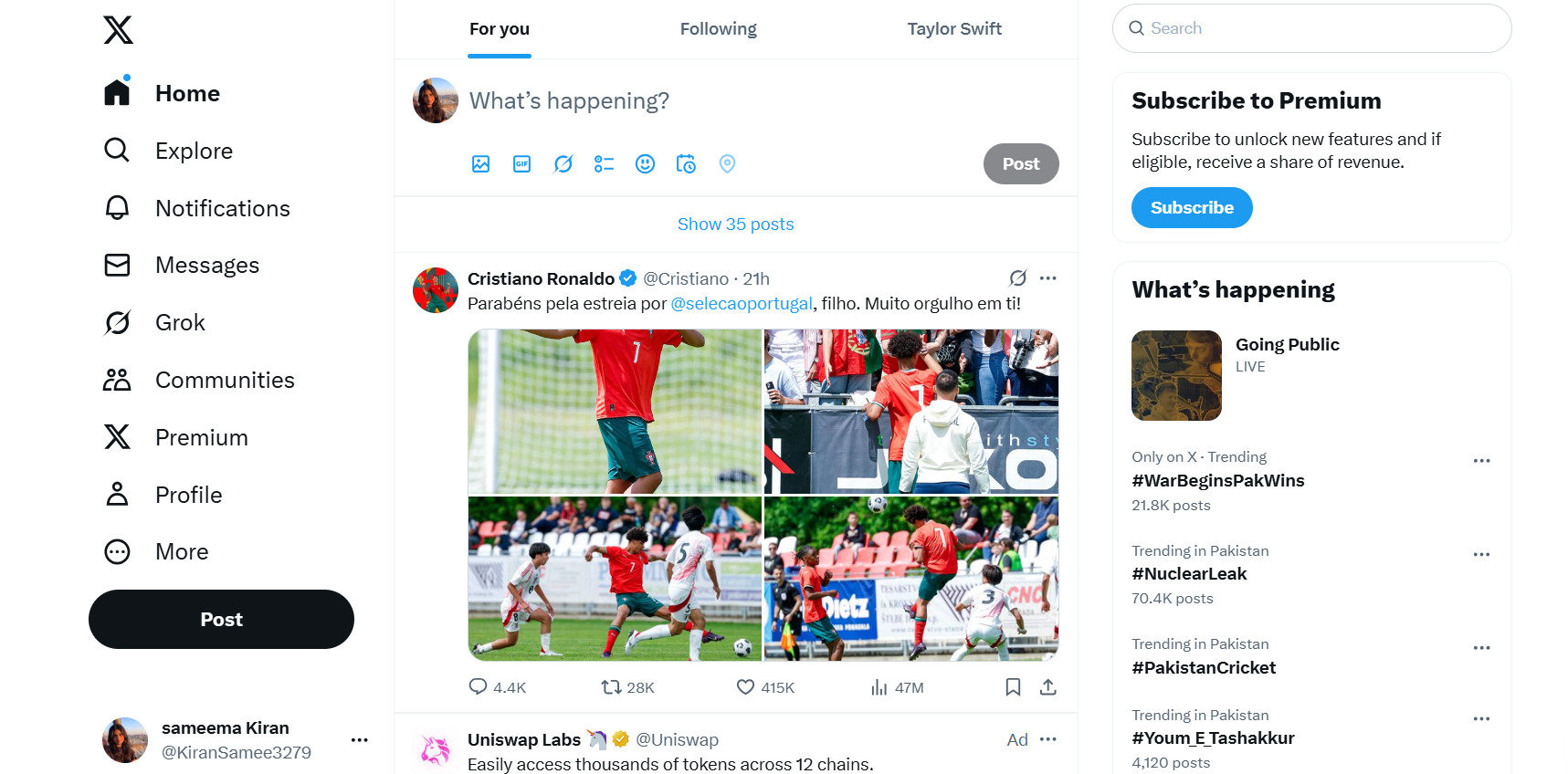
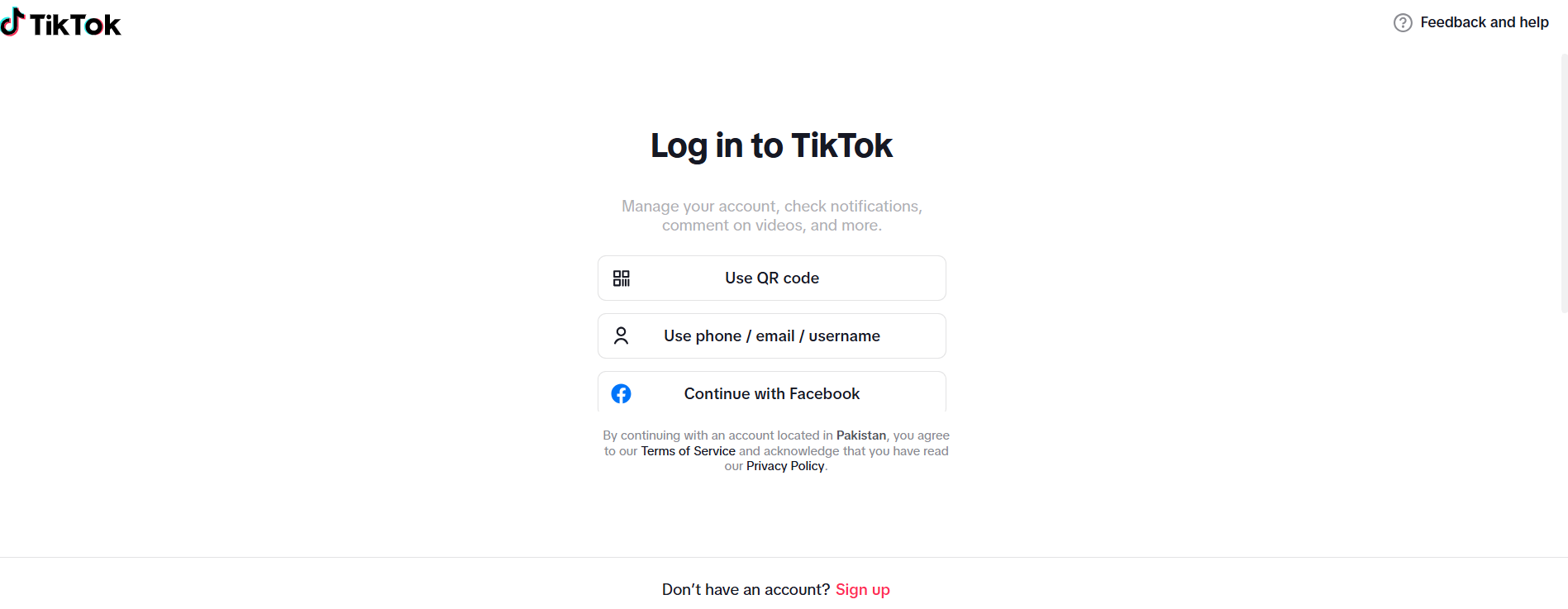
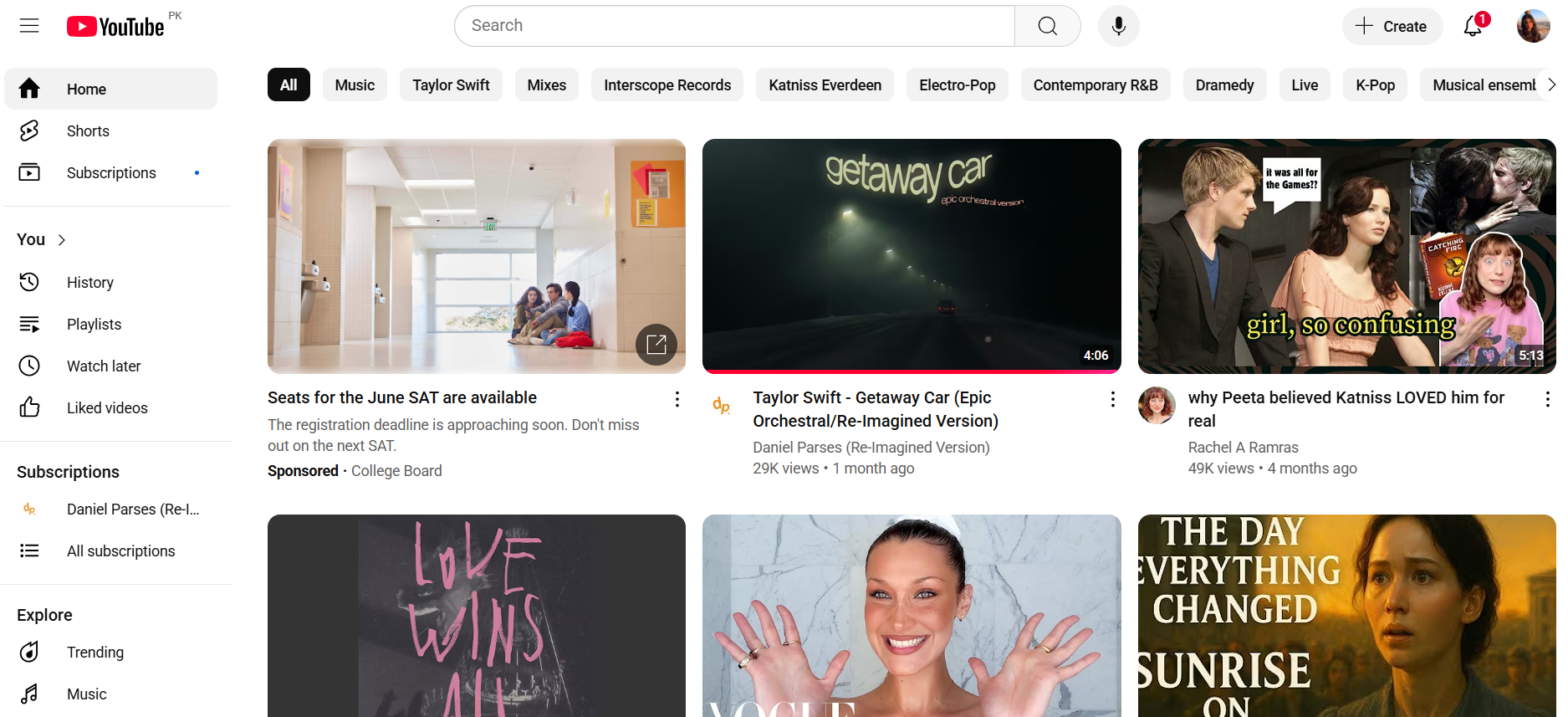

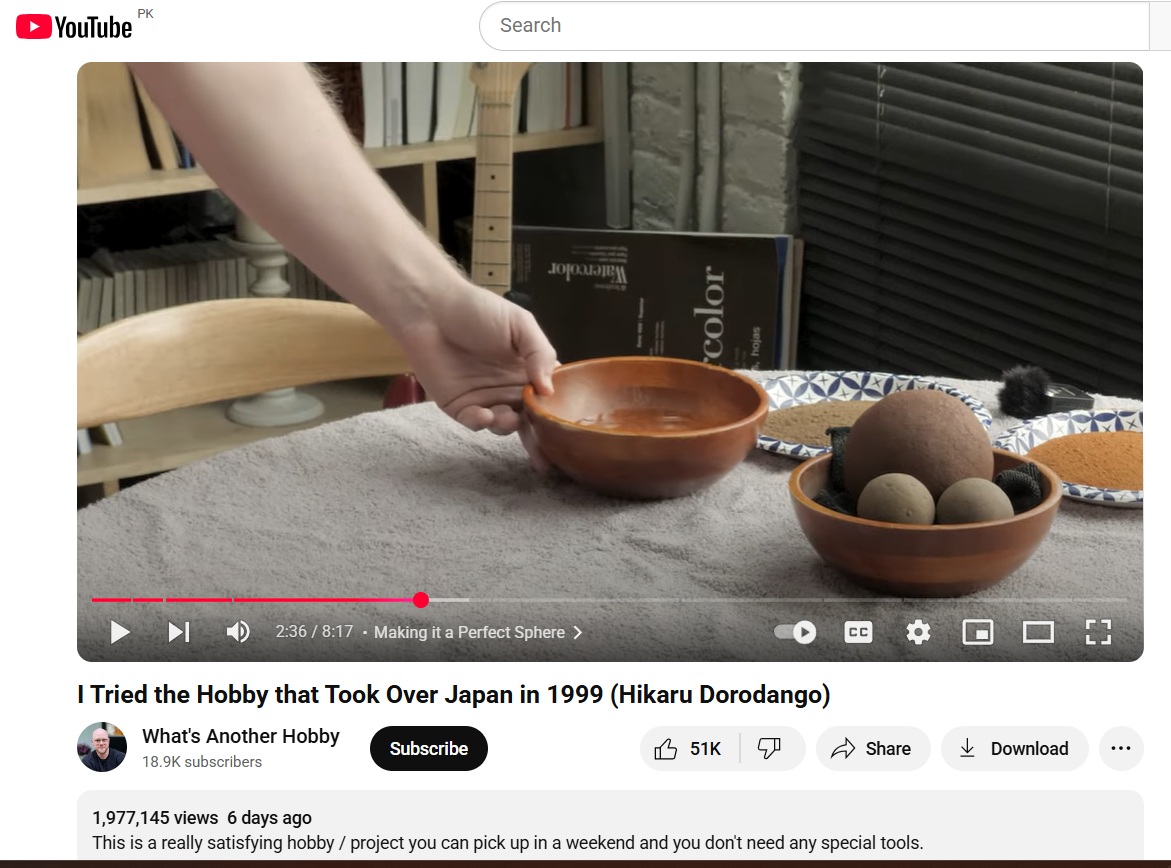
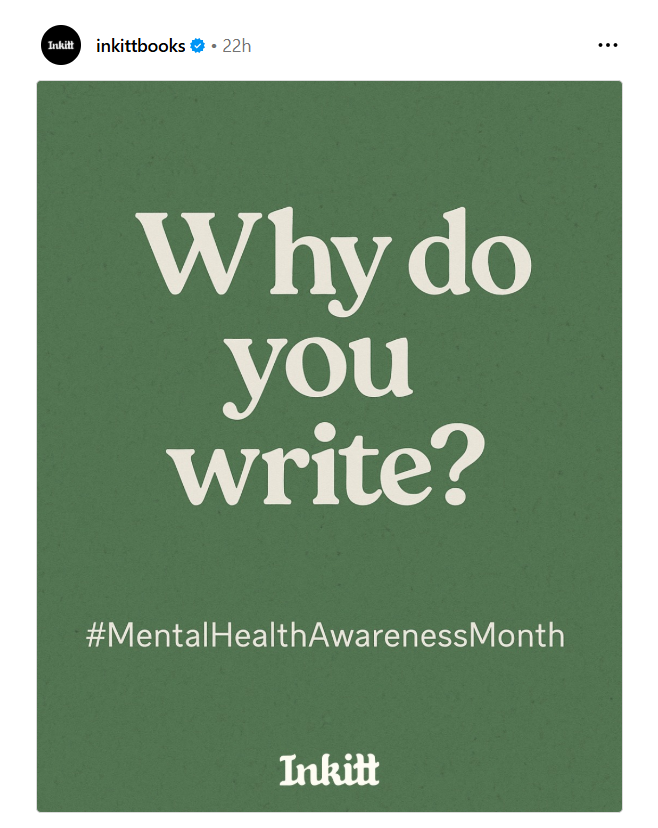
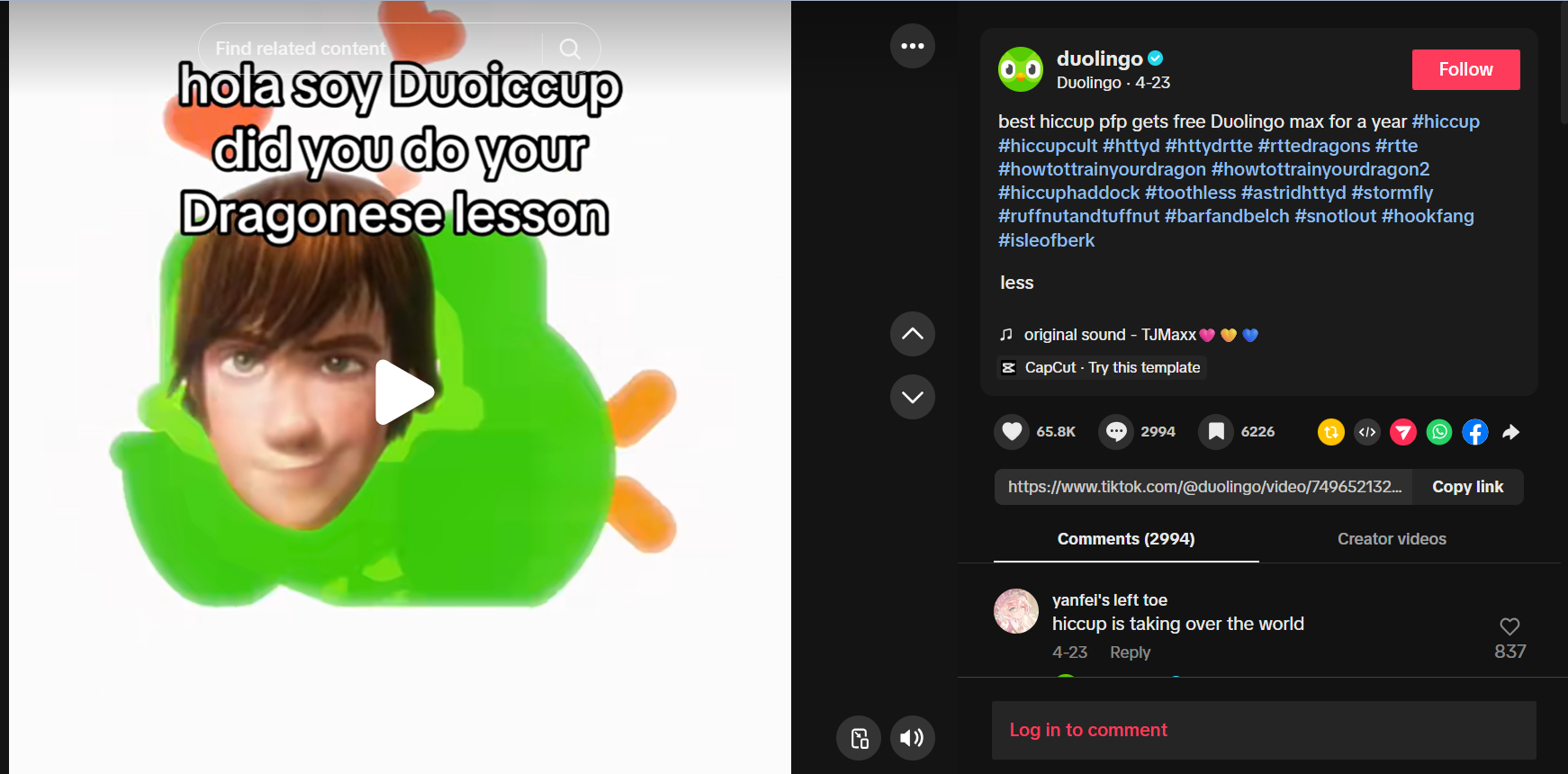


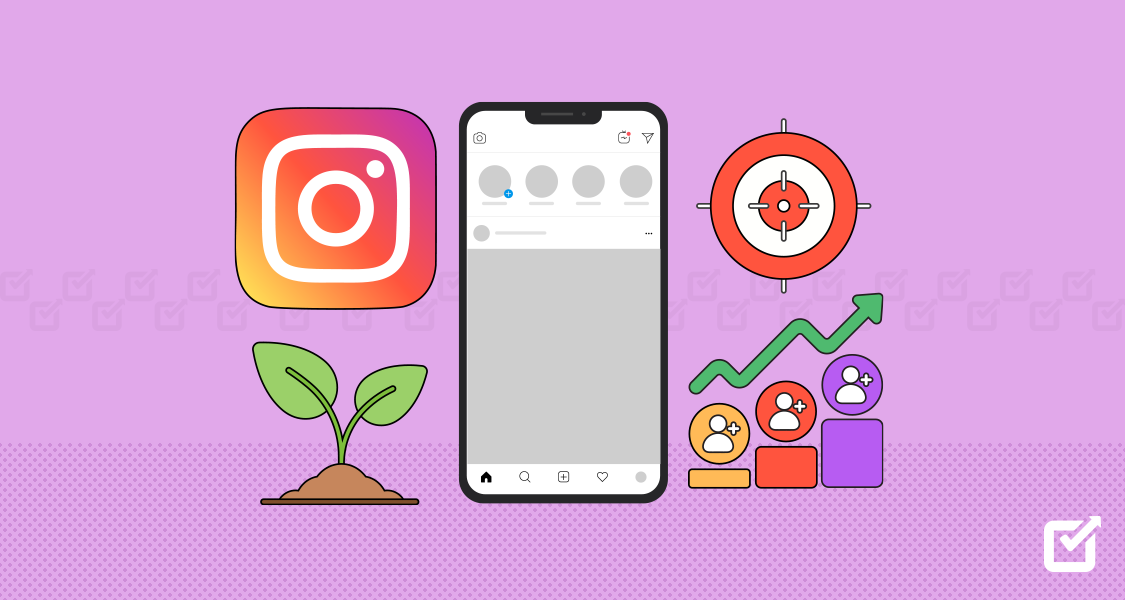
1 comment
Chef Omor
I find this very helpful and insightful. I should be able to handle my social media accounts better with this. Took note and I’m working with it. Thank you so much